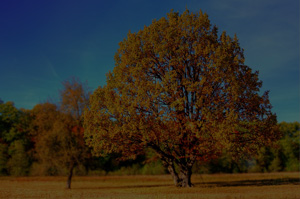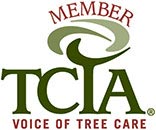Planting trees is more than just digging a hole, plopping the plant in and topping it all off with some soil and water. It’s an investment in your property and the environment. Selecting trees that will survive and grow into healthy mature trees requires a thorough analysis of the planting site and a careful match of the trees to that environment.
Here’s what you need to consider before planting:
Your Goals
If you’ve decided to plant a tree, you’ve probably got a pretty good reason for it, and your reasoning behind your decision is an important factor.
If you’re looking for shade in the summer, deciduous trees planted on the south side of your home are a great idea. Elms, maples, oaks and beech trees all fall into this category.
If you’re looking for a windbreak to block blustery air in the winter or add some privacy, evergreen trees and shrubs are your best bet.
If you’re just looking to add some curb appeal to your property, consider the tree shape, or colors or flowers the trees will have when in bloom or in the fall.
Site Conditions
This is probably one of the most important factors to consider when choosing trees to plant. Soil, drainage, sunlight, water access and location will all determine what plants will work the best.
In addition, Minnesota is divided into six major ecological regions, with all of them having unique characteristics that make certain trees and plants a better match. It’s important to make sure that you’re planting trees that will thrive in the environment you have to work with.
My Minnesota Woods by the University of Minnesota Forest Resources Extension has suggestions and best practices for each region. This guide breaks down trees and shrubs by those that are highly recommended, those that should be used sparingly, ones to stay away from, and ones you should try.
Climate
Minnesota can have some pretty harsh winters, so in addition to making sure that your site conditions are ideal, we suggest choosing native plants that are proven to thrive in your environment. Minnesota is home to 52 native tree species, and using the My Minnesota Woods guide can help you make the best choice.
Plant at the Right Time
Planting new trees is best done during a time of year with moderate temperatures and rainfall. In Minnesota, this is usually late winter and spring, or fall. They need time to root and acclimatize before the heat and dryness of the summer or the freezing temperatures in the winter months.
Get more information on tree planting on our “8 Steps for Planting a Tree” article.
Know There Are Professionals Who Can Help
Arborists are tree people. They are highly trained in the art of tree planting and nurturing, and can be a valuable resource. Precision Landscape & Tree has certified arborists on staff that are happy to help. Contact us at 651-484-2726 or fill out an online contact form.
We hope this was helpful!
Other articles you may like:
How to Choose Which Evergreens to Plant
A Look at Common Invasive Species
Why Tree Topping Can Hurt Your Trees











